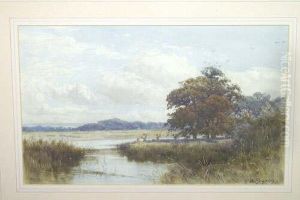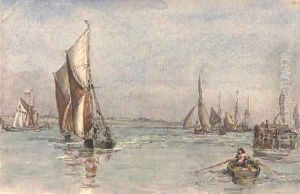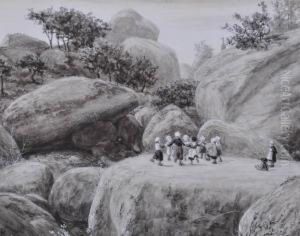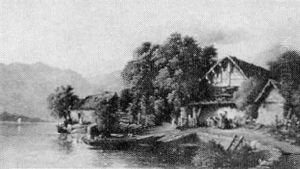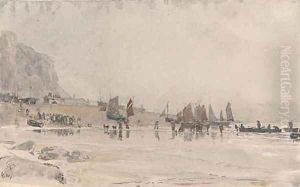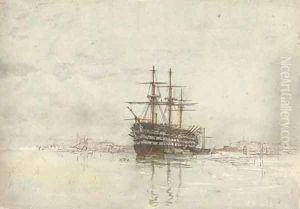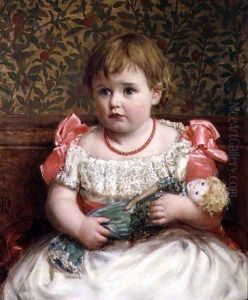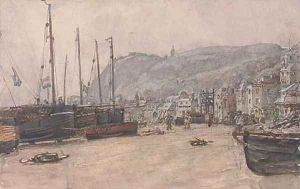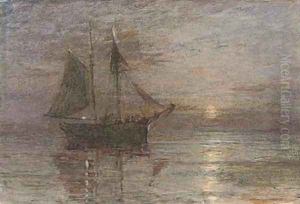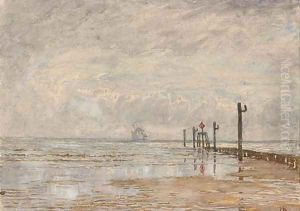Henry Robert Robertson Paintings
Henry Robert Robertson was a British artist born in 1839, known for his work in watercolor and landscape painting. Despite not being as widely recognized as some of his contemporaries, Robertson's work provides a valuable glimpse into the British landscape and pastoral scenes of the 19th century.
His early life and education remain relatively obscure, but it is known that Robertson developed a passion for painting from a young age. He often focused on capturing the beauty of the countryside, particularly in Wales where he spent a significant amount of time. His scenes often included rural activities, people at work, and serene depictions of the natural environment, which were typical subjects of the time.
Robertson was an active participant in the artistic community and exhibited his works at various institutions, including the Royal Academy of Arts. His style was influenced by the prevailing trends of the Victorian era, including the Romantic movement, which emphasized emotion and individualism. He was also affected by the changing artistic movements of the late 19th century, including Impressionism, although he maintained his own distinct style.
Throughout his career, Robertson never achieved the same level of fame as some of his contemporaries, such as J.M.W. Turner or John Constable. However, his work was appreciated by those who favored traditional landscapes and the pastoral genre. His paintings are characterized by their attention to detail, vibrant colors, and the ability to convey the tranquility of the British countryside.
Robertson continued to paint throughout his life, and his dedication to his craft was evident in the quality and consistency of his work. He passed away in 1921, leaving behind a legacy of artworks that continue to be studied and admired for their portrayal of 19th-century Britain. His paintings are held in various collections and are occasionally displayed in art galleries and museums, offering a window into the landscape painting of that era.








